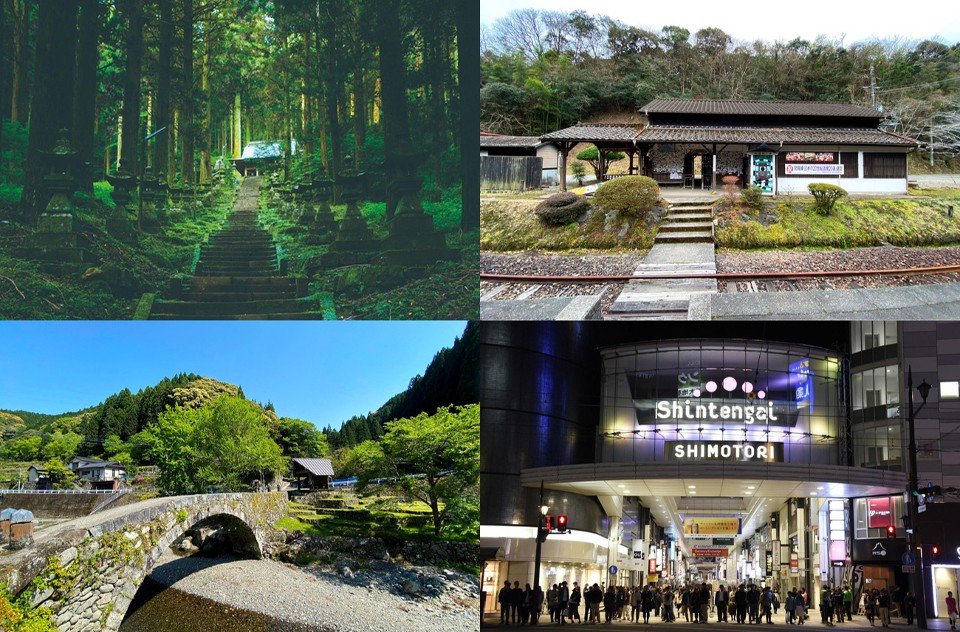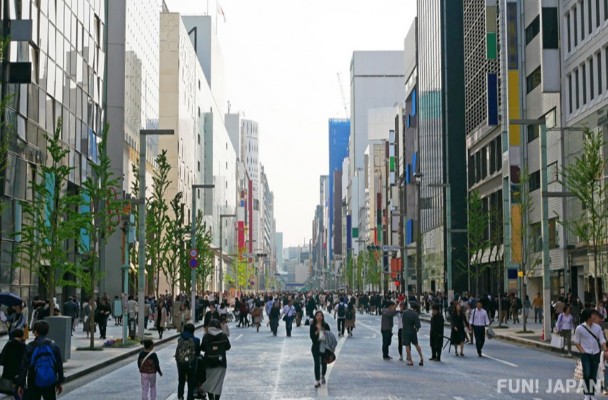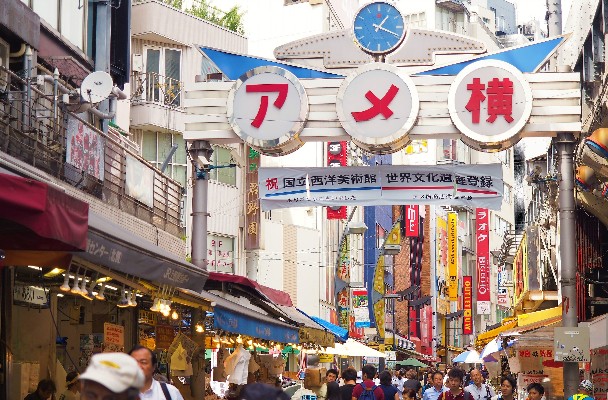The anime adaptation of SAKAMOTO DAYS is set to begin in January 2025, and a live-action film starring Ren Meguro from Snow Man has also been announced—making the series hotter than ever.
The story follows Taro Sakamoto, a legendary hitman who has now settled into a quiet family life. But when assassins suddenly come after him, he unleashes his overwhelming combat skills once again in this action-packed comedy.
Did you know that many of the locations featured in the series are modeled after real-life tourist spots? Why not explore these spots on a pilgrimage and experience the world of SAKAMOTO DAYS before the movie hits theaters?
*Spoiler Alert
*If you purchase or book any products mentioned in this article, a portion of the sales may be returned to FUN! JAPAN.
👉 Purchase SAKAMOTO DAYS TV Anime Blu-ray 【Animate】
🛒 Buy the complete SAKAMOTO DAYS manga series 【Yahoo! Shopping】
🛒 Pre-order the exclusive SAKAMOTO DAYS “Wa-Yo Secchu” (Japanese-Western Style) goods 【Animate】
Live-Action SAKAMOTO DAYS movie announced! Starring Ren Meguro from Snow Man
The live-action movie adaptation of the popular manga and anime SAKAMOTO DAYS has been officially announced. Ren Meguro from Snow Man has been cast as the protagonist, Taro Sakamoto, taking on the challenging role of the legendary hitman.
Information of the Live-Action Movie
■ Cast
- Ren Meguro (Snow Man) as Taro Sakamoto (legendary hitman)
- Fumiya Takahashi as Shin Asakura (Sakamoto’s former subordinate)
■ Original Work: Yuto Suzuki (Weekly Shonen Jump, Shueisha)
■ Director & Screenplay: Yuichi Fukuda
■ Scheduled Release: Golden Week 2026
1. Chinatown (Yokohama)

The "Niikita Chinatown" depicted in the first volume, where Sakamoto and Shin meet Lu for the first time, is believed to be modeled after the area surrounding Choyomon Gate in Yokohama Chinatown.
With over 150 years of history, Yokohama Chinatown is a vibrant area where you can immerse yourself in Chinese culture and enjoy an exotic atmosphere. Packed with authentic Chinese restaurants offering delicious flavors, the area hosts various events throughout the year, keeping it lively and bustling.
One memorable scene in the manga shows Sakamoto buying steamed buns for his family. Yokohama Chinatown is known for its steamed buns, making it a must-try treat. Popular spots like "Kaseiro" and "Kochou" are often visited by people seeking the perfect bun.
👉Japan Yokohama Seaside Gourmet Train Pass|Tokyu & Minatomirai Line 1-Day Ticket & Meal Voucher
Yokohama Chinatown
- Address: Yamashita-cho, Naka-ku, Yokohama City, Kanagawa Prefecture
- Access:
1-minute walk from Exit 1 of Motomachi-Chukagai Station on the Minatomirai Line
5-minute walk from the Chinatown Exit of Ishikawacho Station on the JR Keihin-Tohoku and Negishi Lines
2. Tokyo Dome City (Tokyo)

The "Tokyo Sugar Park" from the second half of volume 1, where the Sakamoto family, Shin, and Lu enjoy themselves together, is thought to be inspired by Tokyo Dome City.
Tokyo Dome City is a comprehensive entertainment complex centered around Tokyo Dome. It includes an amusement park, hotels, a spa, and a shopping mall. The amusement park, "LaQua," offers a variety of attractions ranging from thrilling rides to gentle ones suitable for children, making it enjoyable for people of all ages. The manga portrays the Sakamoto family riding a roller coaster and exploring a haunted house here!
The spa facility "Spa LaQua" provides a range of options for relaxation, including hot springs and saunas. It’s a tranquil space where visitors can unwind and enjoy a resort-like atmosphere right in the heart of the city.
Shopping is another highlight, with numerous stores offering fashion, accessories, and gourmet foods. Tokyo Dome City is an ideal destination for families, couples, or groups of friends.
Tokyo Dome City
- Address: 1-3-61 Koraku, Bunkyo-ku, Tokyo
- Access:
Directly accessible from JR Suidobashi Station
Directly accessible from Suidobashi Station on the Toei Mita Line
Directly accessible from Korakuen Station on the Tokyo Metro Marunouchi and Namboku Lines
Directly accessible from Kasuga Station on the Toei Oedo Line
3. National Museum of Nature and Science (Tokyo)
The "Ogu Tabikagaku Museum" featured in volume 3 is believed by many readers to be modeled after the real-life National Museum of Nature and Science, thanks to its distinctive architecture and exhibits.
The National Museum of Nature and Science is one of Japan's oldest museums and serves as the country's only comprehensive museum dedicated to natural history and the history of science and technology. The exhibits cover a broad range of topics, including Earth, life, and scientific advancements.
Highlights include life-sized dinosaur skeletons and deep-sea creature specimens that immerse visitors in an awe-inspiring natural world. The museum’s realistic and large-scale displays create a thrilling sense of being surrounded by nature.
In the series, the museum is depicted as a key location for research on ESP (extrasensory perception). Given the institution's rich history and reputation, it’s no wonder such a site was chosen as a backdrop for these pivotal events.
👉Tokyo Museum Grutto Pass 2024 | Japan
National Museum of Nature and Science
- Address: 7-20 Ueno Park, Taito-ku, Tokyo
- Access:
5-minute walk from Park Exit of JR Ueno Station
10-minute walk from Exit 7 of Ueno Station on the Tokyo Metro Ginza and Hibiya Lines
10-minute walk from the Main Exit of Keisei Ueno Station
4. Asakusa & Kaminarimon (Tokyo)

In volume 5, the "Tenmon" where ORDER members Shishiba and Osaragi are seen eating katsudon is believed to be modeled after the iconic "Kaminarimon" of Sensoji Temple in Asakusa.
Kaminarimon, the symbol of Asakusa, is officially named "Furaijinmon," derived from the two statues standing on either side of the gate: the deities of wind (Fujin) and thunder (Raijin). These gods have been revered since ancient times and are said to protect Sensoji Temple.
The massive red lantern hanging in the center of the gate features the words "Kaminarimon" on the front and "Furaijinmon" on the back. This imposing structure captivates countless visitors as an unmistakable symbol of Asakusa. Additionally, the base of the lantern displays a detailed dragon carving, showcasing incredible craftsmanship and attention to detail.
Kaminarimon
- Address: 2-3-1 Asakusa, Taito-ku, Tokyo
- Access:
5-minute walk from Exit 1 of Tokyo Metro Ginza Line "Asakusa Station"
2-minute walk from Exit A4 of Toei Asakusa Line "Asakusa Station"
5. Nezu Shrine (Tokyo)
The intense battle scene between Osaragi and Dump in volume 5, featuring a path lined with numerous torii gates, is thought to be set at "Nezu Shrine."
Located in Tokyo's Bunkyo ward, Nezu Shrine is a historic shrine surrounded by lush greenery, despite being in the city center. It is particularly famous for its azaleas, which draw many visitors in spring. One of its most distinctive features is the "Senbon Torii" (Thousand Torii Gates) found on the grounds. These gates are scattered throughout the shrine, not just along the main path, creating a magical, otherworldly atmosphere.
👉 Exploring restaurants in Shitamachi and Yanesen shopping districts and touring Nezu Shrine
Nezu Shrine
- Address: 1-28-9 Nezu, Bunkyo-ku, Tokyo
- Access:
5-minute walk from Tokyo Metro Chiyoda Line "Nezu Station" or "Sendagi Station"
5-minute walk from Tokyo Metro Namboku Line "Todaimae Station"
10-minute walk from Toei Mita Line "Hakusan Station"
6. Tokyo Tower (Tokyo)

The fierce battle between Apart and Sakamoto, Heisuke in volume 6 is set against the backdrop of the iconic "Tokyo Tower."
Standing at 333 meters tall, Tokyo Tower was completed in 1958 and is internationally recognized as a symbol of Japan. It offers stunning panoramic views of the Tokyo skyline, presenting different charms during the day and night. During the daytime, the tower stands out against the bright blue sky, offering breathtaking views of Tokyo’s cityscape. At night, it transforms with beautiful lighting that creates a romantic atmosphere. At its base is "Foot Town," where visitors can enjoy shopping and dining, adding to the tower's appeal as a must-visit destination.
👉Japan Tokyo Tower Observatory E-Ticket
Tokyo Tower
- Address: 4-2-8 Shibakoen, Minato-ku, Tokyo
- Access:
5-minute walk from Akabanebashi Exit of Toei Oedo Line "Akabanebashi Station"
7-minute walk from Exit 1 of Tokyo Metro Hibiya Line "Kamiyacho Station"
6-minute walk from Exit A1 of Toei Mita Line "Onarimon Station"
7. Gion & Yasaka Pagoda Area (Kyoto)

In volume 12, the ORDER members travel to Kyoto on a mission, where they encounter former member Yotsumura, leading to an intense battle. The stage for this clash is "Gion," one of Kyoto's most iconic districts.
Known as Kyoto's most famous geisha district, Gion is a charming area filled with historic temples, serene natural spots, and traditional teahouses. As you stroll along its cobblestone streets, you'll find rows of traditional machiya townhouses, exuding an atmosphere of timeless tranquility. Visitors might even catch a glimpse of elegant maiko or geiko, offering a firsthand experience of Kyoto’s refined culture.
Gion is home to several historic landmarks, such as Yasaka Shrine, as well as scenic spots like Gion Shirakawa, a picturesque area by the canal. Blending vibrant nature with deep-rooted traditions, Gion offers a unique allure throughout the seasons, captivating countless visitors year-round.
👉Kyoto Higashiyama Rickshaw Tour: Hōkan-ji Temple & Yasaka Shrine | Japan
Gion
- Address: Higashiyama-ku, Kyoto-shi, Kyoto
- Access:
Right next to the "Gion" bus stop
6-minute walk from Keihan Main Line "Gion-Shijo Station"
8. Kiyomizu-dera Temple (Kyoto)
The battle between Shishiba and Yotsumura shifts from Gion to "Kiyomizu-dera," where the fight reaches its climax.
Founded in 778, Kiyomizu-dera is one of Kyoto’s most renowned temples and has been recognized as a UNESCO World Cultural Heritage Site since 1994 as part of the "Historic Monuments of Ancient Kyoto."
The temple's iconic "Kiyomizu Stage" offers panoramic views of Kyoto’s scenery, which transforms beautifully with each season—cherry blossoms in spring, lush greenery in summer, vibrant autumn leaves, and serene snow in winter. The temple is also tied to the famous Japanese proverb, "leaping from the stage of Kiyomizu," symbolizing bold decision-making.
👉[In-depth one-day trip to Kyoto] Arashiyama & Rurikoin Temple & Kiyomizudera Temple
Kiyomizu-dera Temple
- Address: 1-294 Shimizu, Higashiyama-ku, Kyoto
- Access: 10-minute walk from the "Gojozaka" bus stop
9. Arashiyama & Togetsukyo Bridge (Kyoto)

While Shishiba and Yotsumura face off, Osaragi engages in her own battle with a maiko. Their confrontation takes them from Gion to Arashiyama, culminating on the iconic "Togetsukyo Bridge."
Spanning the Katsura River, Togetsukyo Bridge stretches approximately 155 meters in length and 11 meters in width. Its name, meaning "Moon Crossing Bridge," comes from the breathtaking view of the moon appearing to traverse the sky above the bridge. The scenic vista of the Arashiyama mountains and the Katsura River changes dramatically with the seasons, offering stunning views year-round.
Situated in the heart of the Arashiyama district, Togetsukyo Bridge is a hub for exploring nearby attractions like Tenryu-ji Temple, the Bamboo Grove Path, and Jojakko-ji Temple. Visitors often use the bridge as a starting point for an enriching Arashiyama experience.
Togetsu Bridge
- Address: Sagano-Nakanoshima-cho, Ukyo-ku, Kyoto, Kyoto Prefecture
- Access:
2-minute walk from Randen (Keifuku Railway) "Arashiyama Station"
8-minute walk from Hankyu "Arashiyama Station"
11-minute walk from JR Saga "Arashiyama Station"
🚅Book Shinkansen Tickets with NAVITIME Travel!👉 Click here
😄Make Your Journey in Japan Even Smoother with NAVITIME eSIM! 👉 Click here
















Comments